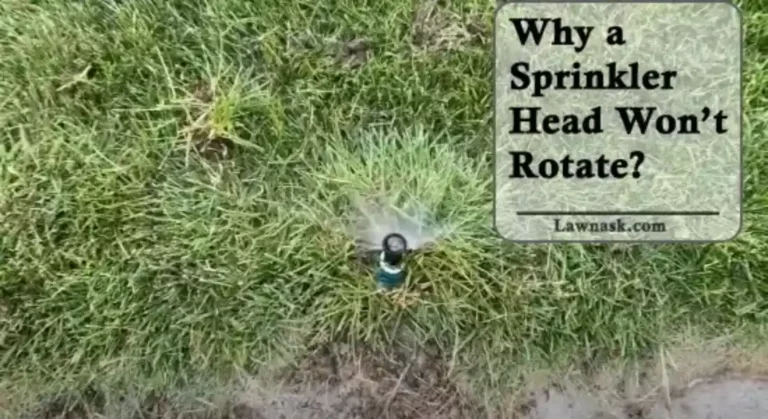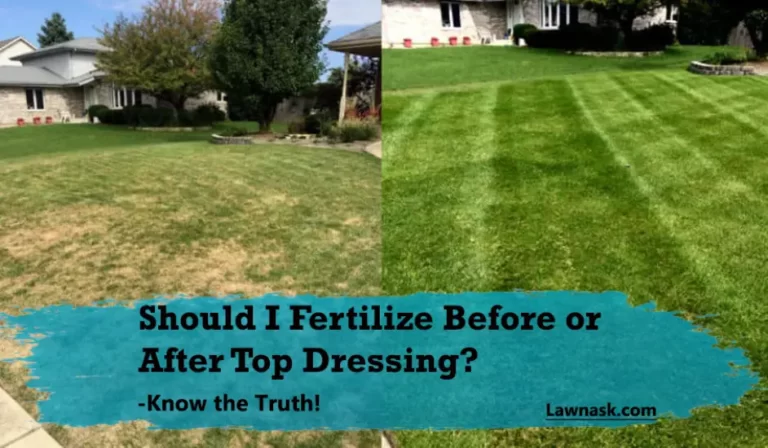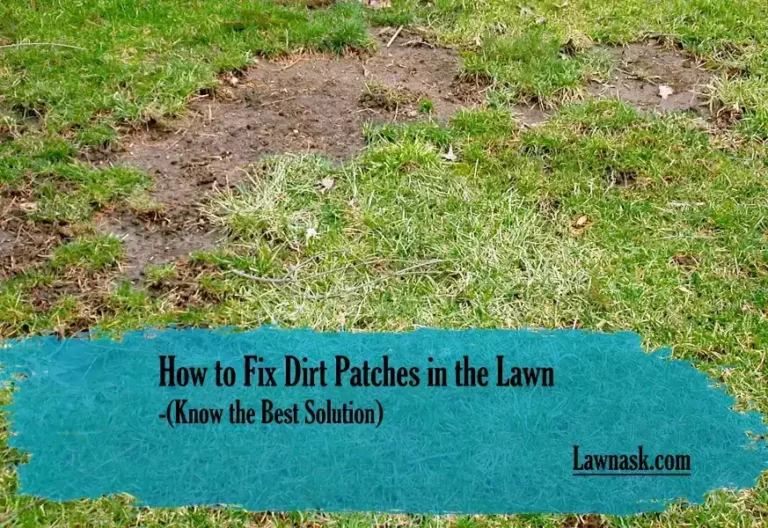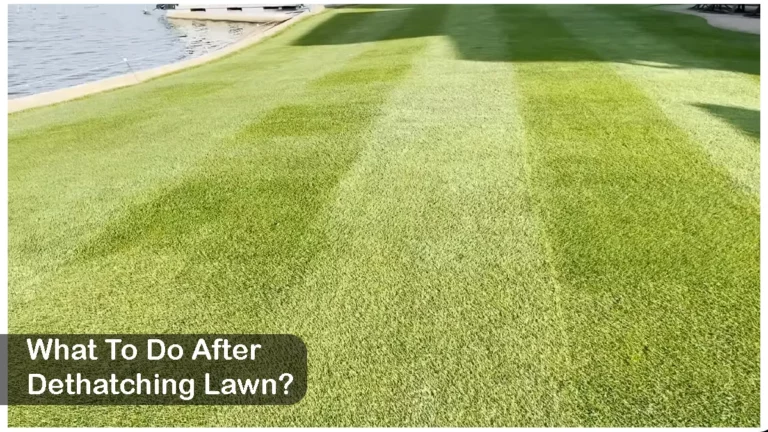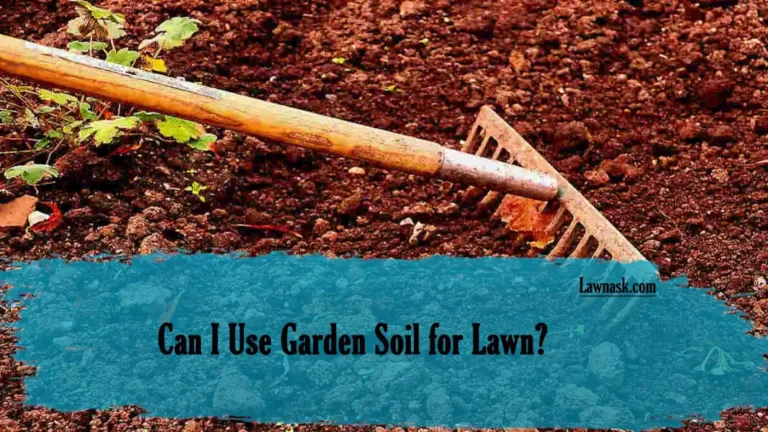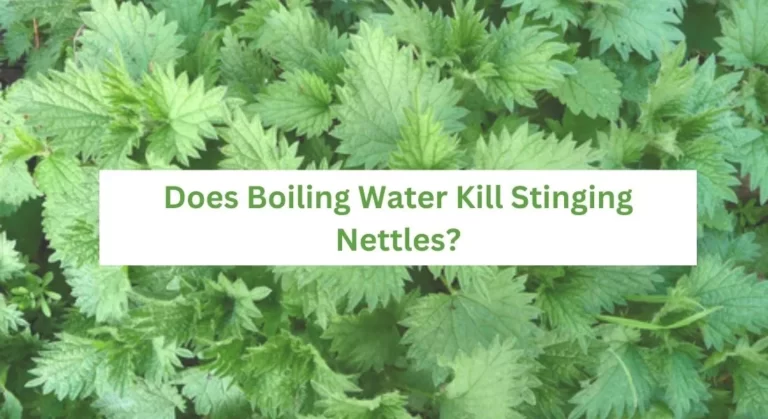Can Dethatching Hurt Your Lawn? Details Guide
Proper dethatching is a great way to get rid of excess thatch and keep your lawn healthy. But is it always beneficial or can dethatching hurt your lawn as well?
In short, over-aggressive or improper dethatching can produce negative results and hurt your lawn.

Understanding Thatch Layer and Its Importance
The debris that we call thatch isn’t always bad. A thin layer of thatch provides some benefits to the lawn as well.
So what is thatch you ask? It’s a layer of dead grass, roots, crowns, and other organic stuff found in the soil.
Some new homeowners regard thatch as only a problem. But a small amount of thatch is always good for your lawn.
It acts as an insulator to help regulate the soil’s temperature and moisture level, kind of like a natural mulch. Your lawn will not have as much risk of compaction.
Thatch has other great properties as well. Half an inch of thatch contains mostly dead grass and roots. These dead parts decompose to provide new grassroots essential nutrients.
Thatch only becomes a problem when it starts to accumulate. If your lawn can’t prevent thatch build up and break it down, then you have a real issue on your hands.
This is where dethatching comes into play. You need to maintain the thatch layer and not wipe it out. Improper dethatching will cause the soil quite some harm.
Can Dethatching Hurt Your Lawn: The Truth
Dethatching done correctly doesn’t usually cause any long-term bad effects. It’s a good practice for maintaining thatch buildup. But dethatching can hurt your lawn if you are not careful.
Here are the potential risks of dethatching your lawn:
Root Damage and stress
Whether you use a hand rake or a vertical mower it is essential to not dig past the thatch layer. You should not press so hard that the blades dig through the soil.
If it cuts into the soil too deep where the roots are it will pull them out. The grass will lose a lot of resilience and will not be able to absorb nutrients much.
Dethatching when it’s not necessary stresses out the grass. Pests and diseases will be able to get a hold of your lawn easily.
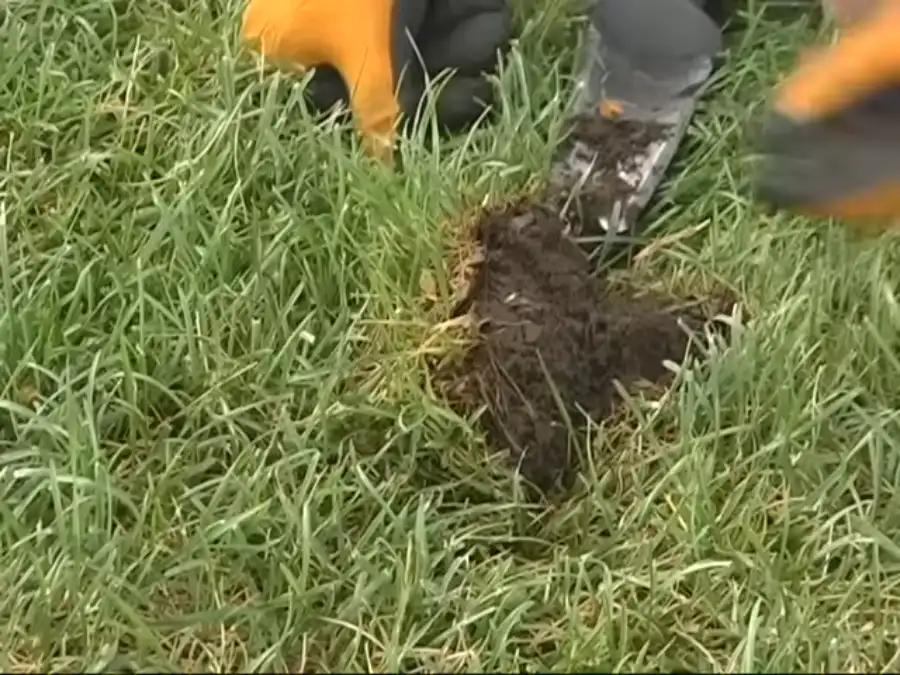
Disrupts Useful Microbes and Bacteria
Microbes in the soil play an important role in recycling nutrients and making nutrients by decomposing thatch.
Nematodes, arthropods, and earthworms purify the environment of the soil and maintain the soil structure.
Dethatching disrupts the balance by removing some of these microbes.
Weed Growth
Thatch helps trap weed seeds such as crabgrass inside it so it doesn’t come into direct contact with the soil. As these weeds steal nutrients from the soil it hinders proper grass growth.
Dethatching disturbs the top layer of the soil and weeds take advantage of the open spots to compete with the grass.
Dries Out the Soil
Thatch works as a moisture retainer. It keeps the soil under it cool and reduces water evaporation.
Dethatching exposes the soil to direct sunlight. The water in the soil starts to evaporate more quickly and dries out. Dehydrated soil has the highest risk of compaction.
Grass takes more time to recover and grow and you may even need to reseed parts of your lawn.
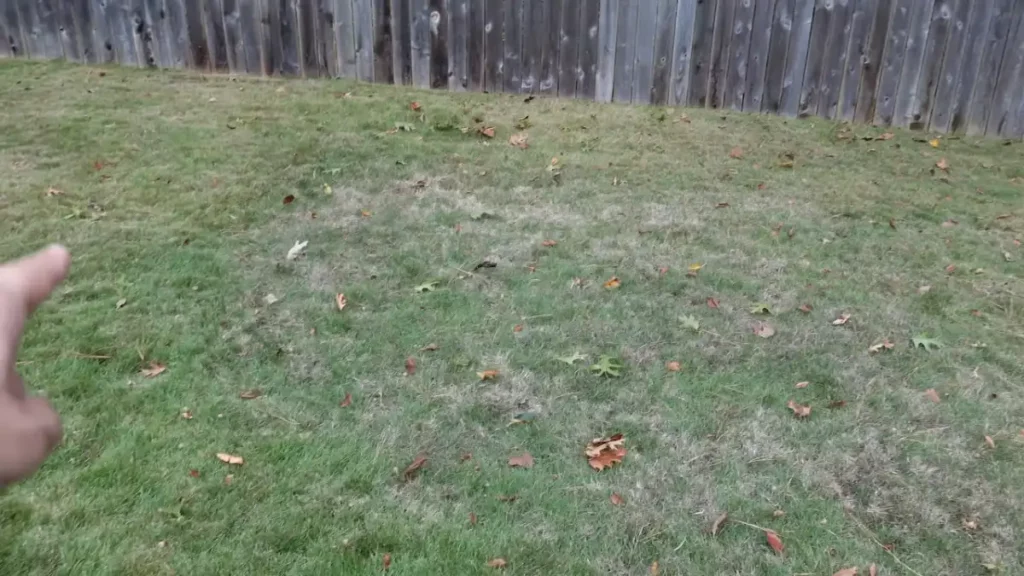
What to Do if You Accidentally Damage Your Lawn While Dethatching?
There is no need to panic if you accidentally hurt your lawn while dethatching. Dethatching is done with good intentions. But it can result in unintended harm and make the lawn look worse than before.
But don’t be afraid. These damages are easily rectifiable through proper assessment and care.
Follow these tips to mitigate the damages:
Assess Damaged Areas
Walk around the lawn to identify areas that have been damaged. You can mark the spots with a stick. Look for areas with thinner grass and a patchy look.
Put your hand on the lawn and see if you can feel a sponge. Take note of areas that do not have any rubbery feel to it.
Water and Fertilizer
Since dethatching exposes the soil it is essential to water the grass and the soil immediately after. If your lawn looks bad take a hose and spray water onto the bare parts.
Apply some fertilizers throughout the lawn. You can use liquid, organic, or synthetic fertilizers but it is best to use organic ones if your lawn is in bad shape. It will help recover better in a natural way.
Reseed to let New Grass Grow
You’ll have to reseed severely damaged areas. Choose a grass type that you know is already in your lawn or matches the existing grass.
To reseed the lawn, follow these steps:
- Collect and remove the debris that you gathered from dethatching.
- Spread the grass seed evenly over the bare areas.
- Press the seed down so it comes into direct contact with the soil.
- Water the newly spread seeds and keep the soil moist until they grow.
Aerate the Lawn
If you suspect that the soil is compacting, consider aerating the whole lawn. Use either a spike aerator or hollow tines and push it into the ground. It will create wholes through which air and water can enter and circulate the soil.
Related Post: Prepare for Dethatching Season: What to Do Before Dethatching?
How to Dethatch Your Lawn Without Harming It?
You should always carefully plan and use proper techniques to dethatch your lawn. Dethatching needs careful consideration and has to be done at the right time to avoid damaging your lawn.
Here’s how to dethatch your lawn without harming the grass or the lawn itself:
Evaluate the Condition of Your Lawn
Not all lawns have the same level of thatch buildup. Grass, mowing habits, and even cultural practices have an impact on the accumulation of thatch.
So before dethatching, make sure your lawn needs it. Push your fingernail down the lawn and assess the density of the thatch layer. You will know when you need to dethatch.
Choose the Right Season
Some homeowners will suggest not dethatching during the spring when the grass is in active bloom. Dethatching is best when the seeds are actively growing. This will help them recover from any potential damage.
Dethatch winter season grass like Kentucky bluegrass or ryegrass in the early fall. On the other hand, dethatch summer grass when the spring season is almost over.
Aftercare is Important
Water and fertilizer after dethatching help the grass recover rapidly. Keep an eye on the lawn’s recovery progress. Ensure there are no water puddles and keep it drained but not dry.
Avoid heavy foot traffic if at all possible for a few weeks to allow the grass to grow after an overseeding session.
Related Post: What to Do After Dethatching Lawn? Complete Guide
Frequently Asked Questions (FAQs)
What does a lawn look after dethatching?
It usually looks beat up or ragged. If you don’t dethatch properly there will be bare spots noticeable in different areas.
How often to dethatch lawn?
You only need to dethatch your lawn once a year. For some grass types, you are okay just aerating the lawn and you can dethatch it in alternate years.
Can thatch turn into soil?
Thatch is mostly organic matter. If the microbes can effectively break it down it turns into dark humus and eventually might mix with the soil.

